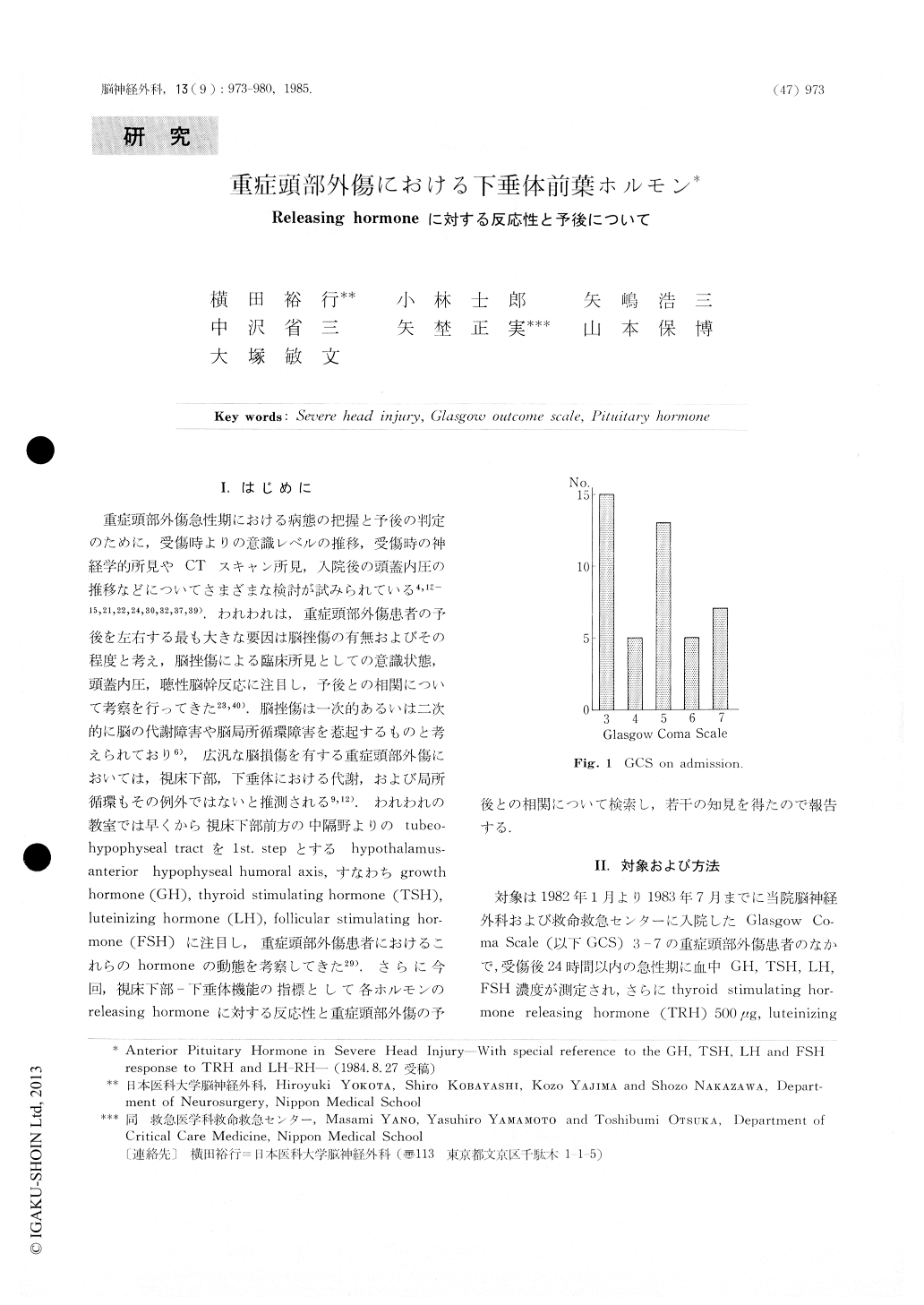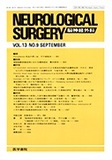Japanese
English
- 有料閲覧
- Abstract 文献概要
- 1ページ目 Look Inside
I.はじめに
重症頭部外傷急性期における病態の把握と予後の判定のために,受傷時よりの意識レベルの推移,受傷時の神経学的所見やCT スキャン所見,入院後の頭蓋内圧の推移などについてさまざまな検討が試みられている4,12-15,21,22,24,30,32,37,39).われわれは,重症頭部外傷患者の予後を左右する最も大きな要因は脳挫傷の有無およびその程度と考え,脳挫傷による臨床所見としての意識状態,頭蓋内圧,聴性脳幹反応に注目し,予後との相関について考察を行ってきた23,40).脳挫傷は一次的あるいは二次的に脳の代謝障害や脳局所循環障害を惹起するものと考えられており6),広汎な脳損傷を有する重症頭部外傷においては,視床下部,下垂体における代謝,および局所循環もその例外ではないと推測される9,12).われわれの教室では早くから視床下部前方の中隔野よりのtubeo-hypophyseal tractを1st.stepとする hypothalamus-anterior hypophyseal humoral axis,すなわちgrowth hormone(GH),thyroid stimulating hormone(TSH),luteinizing hormone(LH),follicular stimujating hor-mone(FSH)に注目し,重症頭部外傷患者におけるこれらのhormoneの動態を考察してきた29).
Measurement of the serum level of anterior pituitary hormones (GH, TSH, LH and FSH) and the response of these hormones to their releasing hormones were made in 45 uncomplicated head injury patients within 24 hours after injury. We classified these 45 patients into three groups according to the Glasgow Outcome Scale of six months after head injury, such as good outcome group (GR or MD), poor outcome group (SD or PVS) and dead group.
The serum level of the anterior pituitary hormones in dead group were higher than those in the good or poor outcome group, especially the level of GH.

Copyright © 1985, Igaku-Shoin Ltd. All rights reserved.


